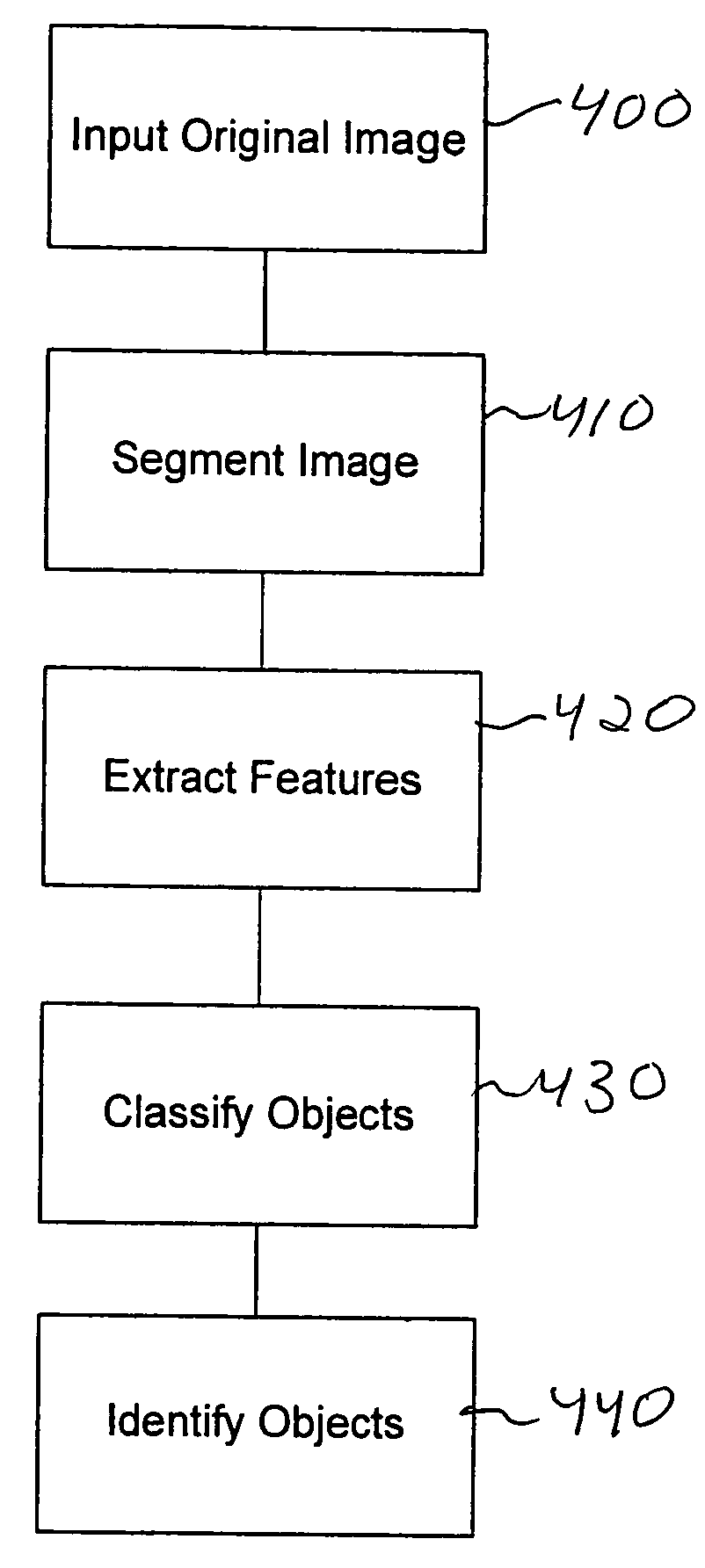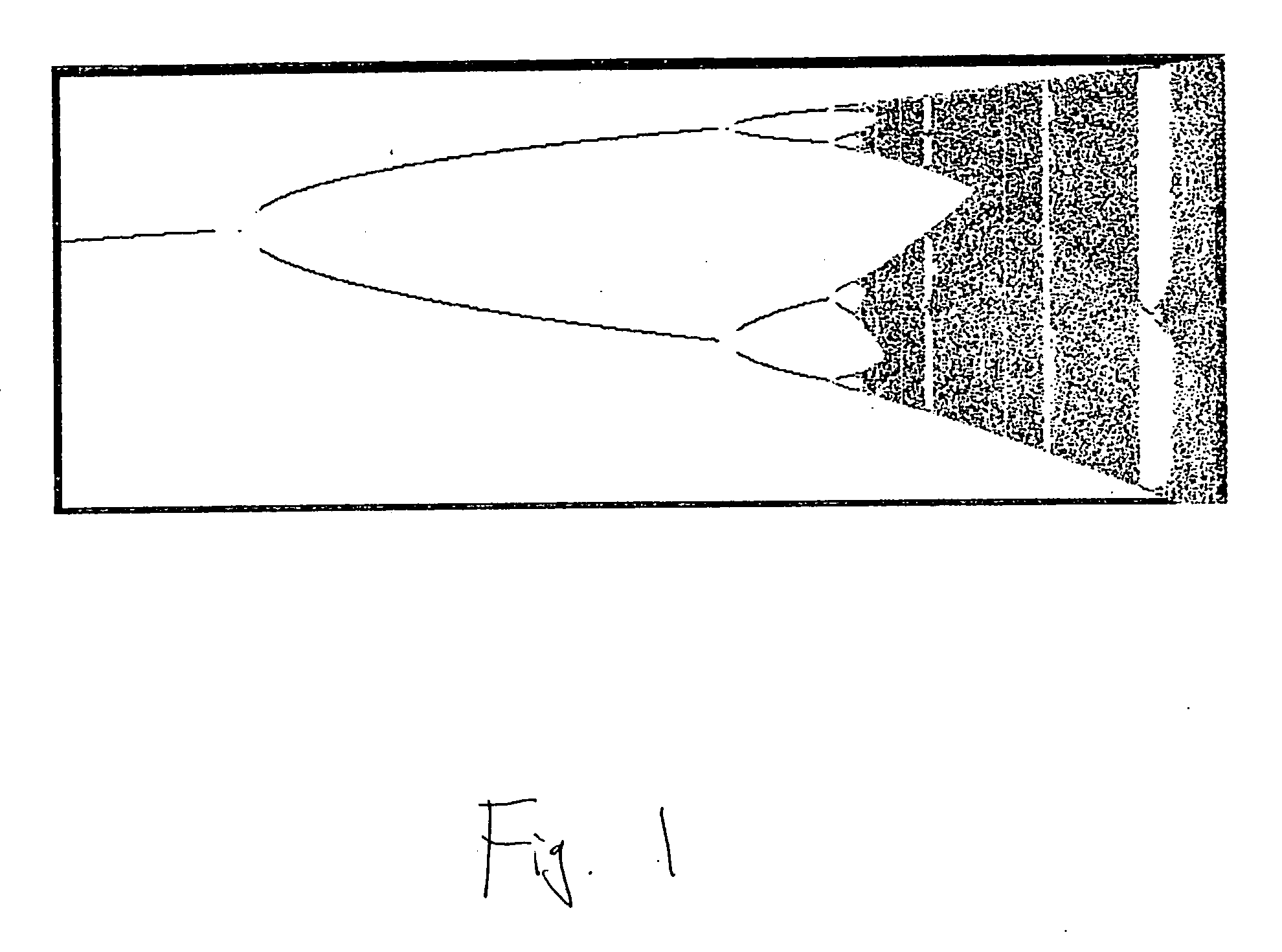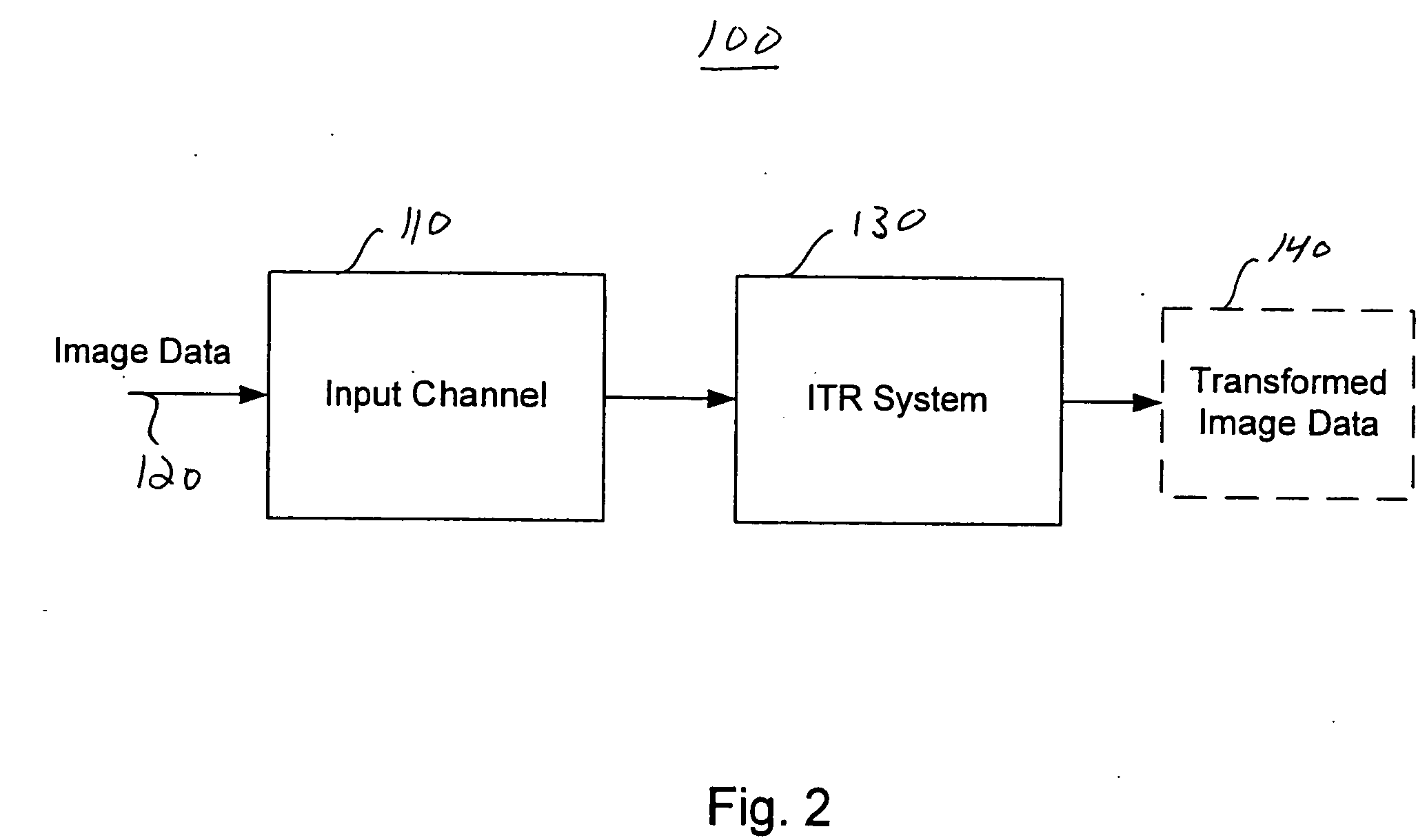System and method for identifying objects of interest in image data
a technology of image data and object identification, applied in the field of image analysis, can solve the problems of insufficient grayscale processing to identify complex images, difficult, if not impossible, and inability to identify objects with existing pattern recognition approaches, and achieve the effect of preserving object self-similarity and stable behavior
- Summary
- Abstract
- Description
- Claims
- Application Information
AI Technical Summary
Benefits of technology
Problems solved by technology
Method used
Image
Examples
Embodiment Construction
Definition of Terms
[0045] The following definitions hold throughout the contents of this application. If additional or alternative definitions of the same or similar words are provided herein, those definitions should be included herein as well.
[0046] Statistically identical: Two sets of data are referred to as “statistically identical” if under one or more types of statistics or observation there is essentially no discernable difference between them.
[0047] Point operation: Point operation is a mapping of a plurality of data from one space to another space which, for example, can be a point-to-point mapping from one coordinate system to a different coordinate system. Such data can be represented, for example, by coordinates such as (x, y) and mapped to different coordinates (α,β) values of pixels in an image.
[0048] Z effective (Zeff): Is the effective atomic number for a mixture / compound of elements. It is an atomic number of a hypothetical uniform material of a single element w...
PUM
 Login to View More
Login to View More Abstract
Description
Claims
Application Information
 Login to View More
Login to View More - R&D
- Intellectual Property
- Life Sciences
- Materials
- Tech Scout
- Unparalleled Data Quality
- Higher Quality Content
- 60% Fewer Hallucinations
Browse by: Latest US Patents, China's latest patents, Technical Efficacy Thesaurus, Application Domain, Technology Topic, Popular Technical Reports.
© 2025 PatSnap. All rights reserved.Legal|Privacy policy|Modern Slavery Act Transparency Statement|Sitemap|About US| Contact US: help@patsnap.com



